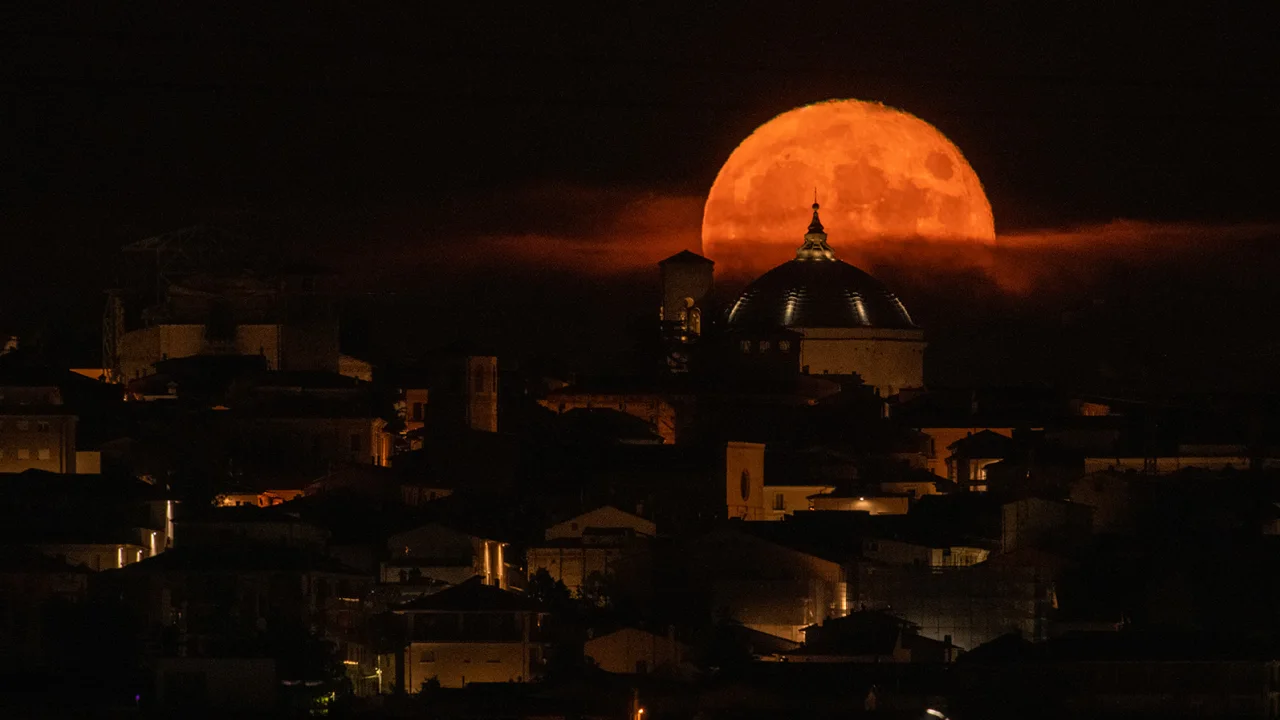Get prepare for a celestial treat this August as the moon nears its closest point to Earth, creating two stunning supermoons. Supermoons occur when the moon appears full at its perigee, the closest distance to Earth in its elliptical journey. This month, the first supermoon will grace the skies on August 1, while the second, a rare super blue moon, will dazzle on August 30. Let’s delve into the wonder of these lunar events and prepare for a breathtaking sky-watching experience.
1. The First Supermoon on August 1
The first supermoon will pinnacle at 2:32 p.m. ET on August 1, casting its radiant glow across the night sky at a distance of approximately 222,158 miles from Earth. Viewers in Europe, the United Kingdom, Africa, and the Middle East will have the best opportunity to witness this marvel. For the ones withinside the United States, the moon will nonetheless seem spherical and complete at some stage in the nighttime of August 1. Supermoons commonly appearance brighter and large because of their proximity, alevin though this could now no longer continually be obtrusive to the bare eye.
2. The “Sturgeon Moon”
The full moon of August is also known as the “sturgeon moon,” named after the time when indigenous populations historically found it easy to catch large freshwater fish in the Great Lakes. Stateside visitors can seize a glimpse of the sturgeon supermoon after sundown on August 1, searching closer to the southeast.
3. The Rare Super Blue Moon on August 30
The grand finale of August will be the super blue moon on August 30, appearing at its closest point to Earth this year, about 222,043 miles away. A blue moon refers to the occurrence of a second full moon within the same calendar month, a relatively rare phenomenon that happens roughly once every two and a half years. Despite its name, the super blue moon won’t actually appear blue; the term originates from a 16th-century expression denoting something that rarely happened.
4. Understanding Supermoons and Blue Moons
Supermoons arise while the moon is at or close to its closest factor to Earth (perigee) even as acting full. This phenomenon makes the moon seem as much as 30% brighter and approximately 14% large than complete moons on the farthest factor from Earth. While the term “supermoon” isn’t a professional astronomical term, it is used to explain complete moons that come within at least 90 percent of perigee, resulting in supermoons happening three to four times a year.
Blue moons, on the other hand, refer to the occurrence of two full moons in the same calendar month. Not all blue moons are supermoons, making the August 30 complete moon a remarkable and uncommon event.
Conclusion
August promises a spectacular sky-watching experience with two breathtaking supermoons, get prepare of it. The first on August 1 will showcase the radiant “sturgeon moon,” while the second on August 30 will be a rare super blue moon. Embrace the wonder of these celestial events and enjoy the beauty of the moon as it graces the night sky in its closest proximity to Earth. Whether you’re a seasoned lunar observer or a curious sky-gazer, these supermoons are sure to captivate and inspire awe in all who witness them.
